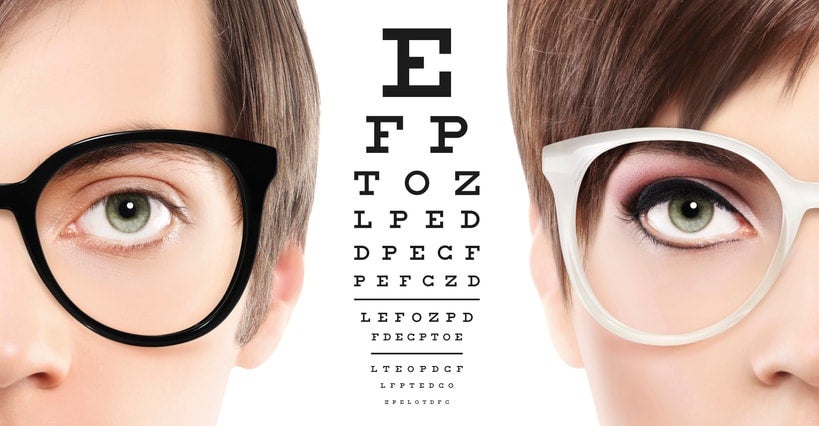How to Read your Eye Prescription and What it Means


You’ve visited the eye doctor and obtained a prescription for eyeglasses or contacts, but when you look at your prescription, all you see is letters and numbers. For the uninitiated, an eye prescription can be confusing. It’s actually not too complicated, once you know what those letters and numbers mean.
The numbers on your prescription will be listed under headings listed as OS and OD. Those headings are Latin abbreviations: OS means oculus sinister, which refers to the left eye, and OD means oculus dexterous, the right eye. Some prescriptions will also have the abbreviation OU, which stands for oculus uterque and pertains to both eyes. You might also see the letter D, which stands for diopters, the unit doctors use to measure
You’ll also notice that in front of the numbers that follow there are plus or minus signs. A plus sign (+) indicates farsightedness, while a minus sign (-) means that you’re nearsighted. How nearsighted or farsighted you are is indicated by the numbers: as a rule, the further away the number is from zero, the worse your vision and the higher your requirement for vision correction.
For instance, a prescription that says -1.00 indicates one diopter of nearsightedness, which is a fairly mild level of nearsightedness. Someone with a higher level of nearsightedness, perhaps -4.25, would require a much stronger corrective lens, which would be thicker. Farsightedness works the same way, with a +5.00 prescription being much stronger than, for instance, a +1.00.
Are there more letters and numbers on your prescription? If you have astigmatism, there should be three sets. They will generally be written as S x C x Axis. S means spherical, and it will be the number discussed earlier, describing farsightedness or nearsightedness. C is for cylinder, which is referring to the astigmatism. This can be a negative or positive number, showing in diopters your degree of astigmatism. The larger the number, the more severe the astigmatism. The number for the Axis is expressed in degrees and will be somewhere between 0 and 180. Astigmatism is a curvature of the cornea, and the Axis is the number that indicates that curvature’s orientation.
If your prescription says ADD, that abbreviation is referring to the magnifying power for your reading, progressive or bifocal lenses. The same number will apply to both eyes. If you see the abbreviation PD, that stands for Pupillary Distance, the distance between the centers of your two pupils.
On a contact lens prescription, you’ll find the same listing of power under OD and OS, and some of the same information you’d see on an eyeglasses prescription. In addition, however, a contact lens prescription will include the prescribed brand, as well as numbers following the abbreviations BC and Dia. BC means Base Curve, Dia stands for diameter, and these two measurements together ensure the proper fit on your eye’s surface.
If you are looking for an eye doctor, the Gerstein Eye Institute in Chicago can help. Since 1968, the Gerstein Eye Institute has been providing exceptional ophthalmologic care to patients in the Chicago area. With decades of experience in ophthalmology, our certified professional staff members work hard to provide the kind of personalized care that keeps patients coming back year after year, eventually entrusting the eye health of their children and grandchildren to us as well. To schedule an appointment, call us at (773) 973-3223 or contact us through our website.
